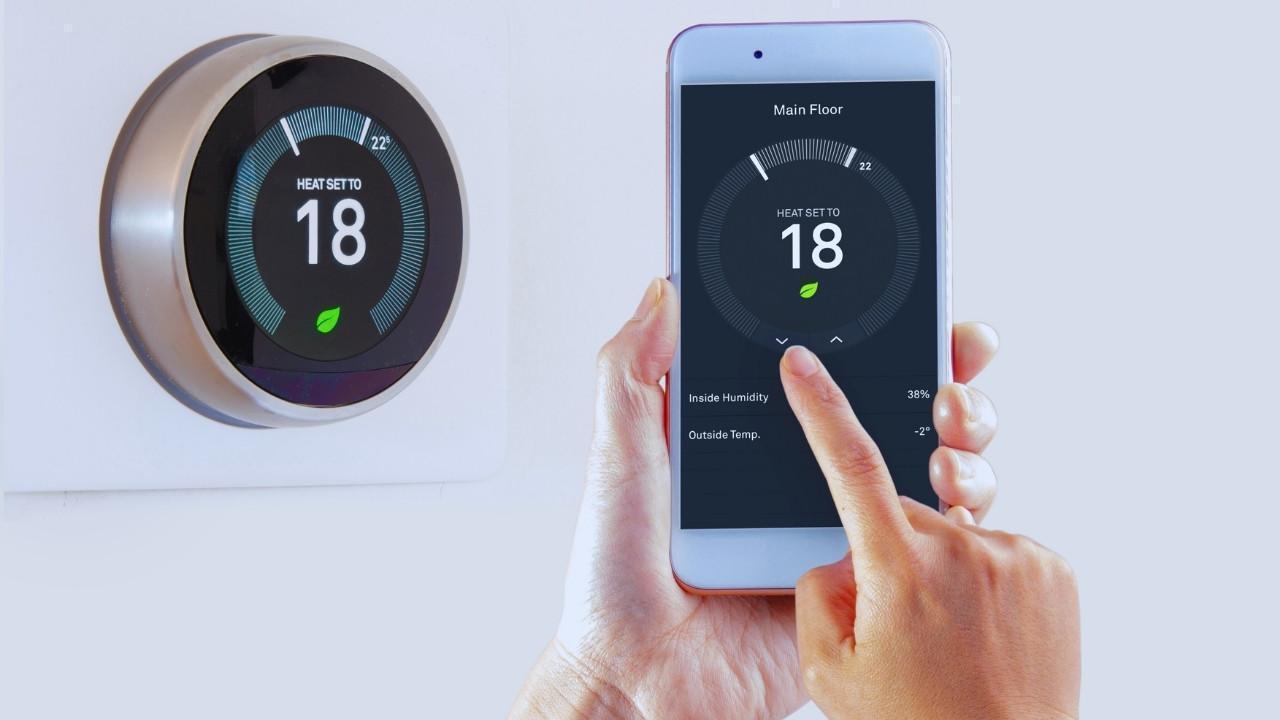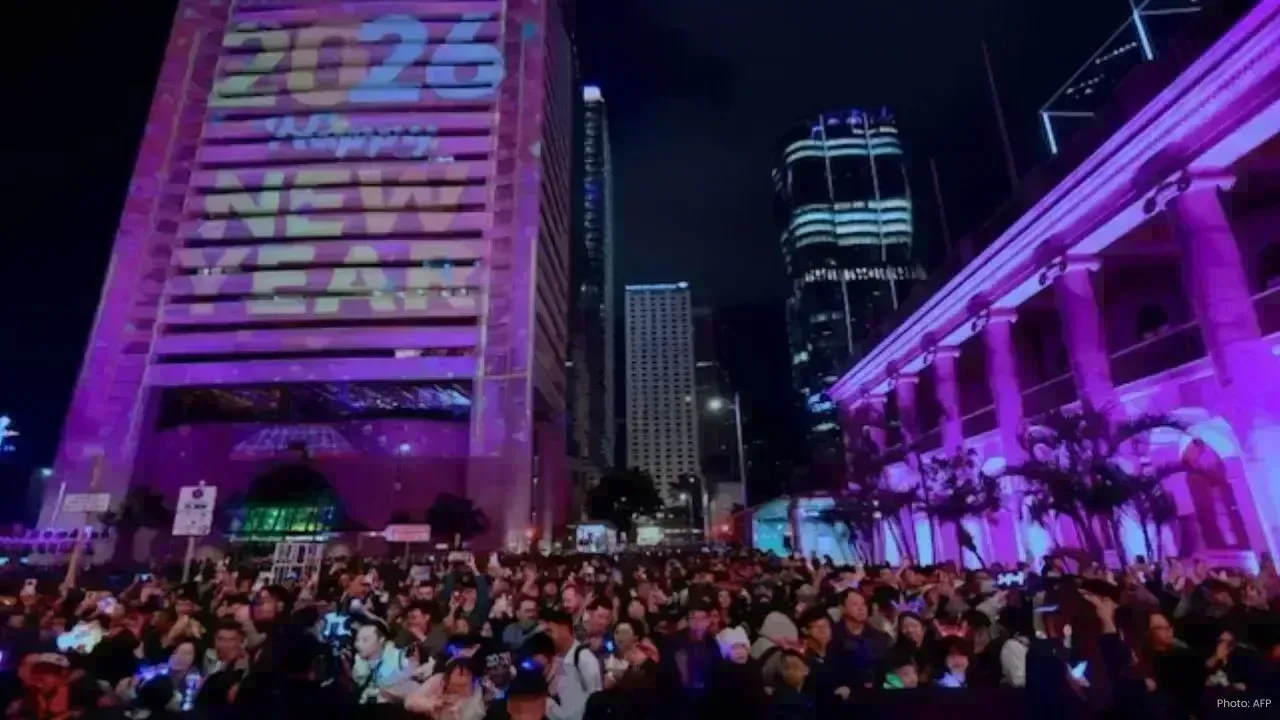You have not yet added any article to your bookmarks!

Join 10k+ people to get notified about new posts, news and tips.
Do not worry we don't spam!

Post by : Anis Farhan
For decades, the evolution of technology has followed a predictable path—sleeker smartphones, larger screens, faster processors, and more visible innovation. But the next frontier of technology is not about what you can see—it is about what you don’t notice at all. Invisible tech is slowly becoming the backbone of modern life, silently integrating into our homes, workplaces, and cities without demanding attention.
From smart fabrics that monitor health to AI-powered appliances hidden in walls, these devices function in the background, enhancing convenience, safety, and efficiency. Unlike traditional gadgets, which announce themselves with logos, wires, and screens, invisible technology is designed to disappear into the environment. You don’t carry it—you live with it.
This article dives deep into the world of invisible tech, exploring some of the most fascinating smart devices you probably didn’t even know existed. We’ll uncover how they work, where they’re being used, and why they represent the future of human innovation.
The idea of clothing being “just fabric” is fading. Smart fabrics now incorporate sensors, conductive fibers, and responsive materials that monitor health and even interact with external environments.
Health Monitoring: Imagine a T-shirt that tracks your heart rate, breathing, and body temperature without bulky straps or watches. Athletes use such fabrics to measure performance while patients rely on them for continuous medical monitoring.
Adaptive Comfort: Some smart textiles adjust to weather conditions, cooling or warming the wearer automatically.
Fashion Integration: Designers are embedding LEDs or fibers that change color, allowing outfits to adapt to mood or occasion.
The genius lies in subtlety. These clothes look and feel like normal fabrics—making the technology truly invisible.
Traditional medical devices often carry a stigma because they are visible. Today’s invisible tech is breaking that barrier.
Invisible Hearing Aids: Tiny in-ear devices that sit deep within the ear canal are now virtually undetectable. These devices not only amplify sound but also use AI to filter background noise, enhancing clarity in crowded environments.
Smart Contact Lenses: Researchers are developing lenses that can monitor blood glucose levels, provide real-time augmented reality overlays, or enhance night vision—all without glasses or bulky gear.
These innovations redefine assistive technology, transforming them into lifestyle enhancers rather than medical labels.
When people think of smart assistants, they imagine smart speakers or displays. But the future lies in assistants embedded directly into walls, lights, or even furniture.
Seamless Interaction: Instead of talking to a speaker, you might interact with your home itself—walls responding with temperature changes, lights adjusting to voice commands, and air conditioning systems optimizing energy use automatically.
No Visible Hardware: Unlike standalone devices, these systems blend into the architecture of homes and offices, turning entire spaces into responsive environments.
This shift represents a new era of “ambient computing,” where technology works without drawing attention.
Even the walls around us are becoming intelligent.
Energy Efficiency: Special smart paints can regulate temperature by reflecting or absorbing heat, reducing energy consumption in homes.
Interactive Walls: Some surfaces can act as touch-sensitive panels, allowing users to control music, lights, or appliances just by tapping on the wall.
Health Benefits: Antimicrobial paints infused with nanotechnology can kill bacteria, protecting occupants without them even noticing.
By embedding intelligence into static surfaces, invisible tech turns every square inch of our environment into functional tools.
Healthcare is one of the biggest beneficiaries of invisible tech. Instead of hospital visits or bulky devices, health monitoring is becoming unobtrusive.
Bed Sensors: Placed under mattresses, these sensors track sleep quality, breathing, and movement—providing doctors with accurate data without interrupting patients.
Smart Toilets: Yes, even bathrooms are getting smarter. These toilets analyze biomarkers in waste to detect early signs of disease.
Air Quality Monitors: Hidden devices continuously scan indoor air for allergens, pollutants, and harmful gases—adjusting ventilation automatically.
These innovations show how tech can save lives while staying invisible.
Carrying cash, cards, or even pulling out a smartphone for payment might soon feel outdated.
Biometric Payments: Facial recognition, palm scanning, and fingerprint authentication allow instant payments without physical wallets.
Wearable Implants: Some early adopters use microchips implanted in the hand to unlock doors, access offices, or pay for items.
Seamless Authentication: Invisible tech eliminates passwords, keys, and wallets, blending security into everyday life.
The line between convenience and privacy is blurred here, sparking important debates about data security.
Furniture is no longer static. Invisible tech is transforming household objects into multifunctional companions.
Adaptive Beds: Some smart beds adjust firmness automatically, track sleep, and even wake users with gentle vibrations instead of alarms.
Charging Tables: Coffee tables with hidden wireless charging pads keep devices powered without cables or clutter.
Work-from-Home Integration: Desks with built-in lighting, temperature regulation, and ergonomic adjustments are emerging as invisible tech solutions for modern professionals.
This evolution turns everyday furniture into lifestyle enhancers, blending technology with comfort.
Glass is becoming one of the most transformative mediums of invisible tech.
Privacy on Demand: Smart windows switch from transparent to opaque with a touch or automatically depending on light.
Energy Efficiency: Some windows regulate sunlight to control indoor temperature, reducing electricity bills.
Interactive Displays: Transparent displays can turn a window into a screen, offering entertainment or work functionality without separate devices.
What once was a static material is now becoming dynamic and intelligent.
Beyond external devices, invisible tech extends into the human body.
Pacemakers & Smart Sensors: Advanced implants monitor heart rhythms and send data directly to doctors in real-time.
Continuous Glucose Monitors: Tiny sensors implanted under the skin track sugar levels for diabetics without finger pricks.
Drug Delivery Systems: Micro-implants release medication at controlled intervals, improving patient adherence.
These technologies highlight how invisible tech can enhance quality of life without drawing attention.
Cities are also adopting invisible technologies to improve safety and sustainability.
Smart Roads: Embedded sensors track traffic flow, detect accidents, and even generate electricity from vehicle movement.
Hidden Surveillance: Cameras disguised as streetlights or integrated into infrastructure enhance security without being intrusive.
Water and Waste Management: Underground smart systems monitor leaks, consumption, and recycling efficiency without visible machinery.
This invisible layer of technology supports entire populations while staying out of sight.
One reason invisible tech resonates is psychological comfort. People prefer environments where technology “just works” without constant reminders. Minimalism and clean aesthetics drive this trend.
At the same time, invisible tech reduces stigma around assistive devices, removes clutter, and enables seamless experiences. However, its hidden nature also raises concerns about privacy, over-dependence, and unseen control by corporations.
The future promises even more subtle integration:
Nano-Tech in Everyday Life: Microscopic sensors embedded in skin creams or foods for health monitoring.
Brain-Computer Interfaces: Devices that let users control machines with thoughts—without visible wearables.
Fully Autonomous Environments: Homes and cities that respond instantly to needs without visible hardware.
We are heading toward an era where technology won’t compete for attention—it will simply exist, quietly shaping our world.
Invisible technology represents the next leap in human innovation. By embedding intelligence into fabrics, walls, furniture, and even our bodies, these devices work silently to improve health, efficiency, and comfort. Unlike flashy gadgets, their value lies in not being noticed at all.
From smart fabrics and adaptive furniture to urban infrastructure and implants, invisible tech is already all around us. It doesn’t demand your attention—it serves you quietly. And in a world overloaded with screens and notifications, that invisibility might just be its most powerful feature.
This article is for informational purposes only and does not constitute medical, financia










Kim Jong Un Celebrates New Year in Pyongyang with Daughter Ju Ae
Kim Jong Un celebrates New Year in Pyongyang with fireworks, patriotic shows, and his daughter Ju Ae

Dhurandhar Day 27 Box Office: Ranveer Singh’s Spy Thriller Soars Big
Dhurandhar earns ₹1117 crore worldwide by day 27, becoming one of 2026’s biggest hits. Ranveer Singh

Hong Kong Welcomes 2026 Without Fireworks After Deadly Fire
Hong Kong rang in 2026 without fireworks for the first time in years, choosing light shows and music

Ranveer Singh’s Dhurandhar Hits ₹1000 Cr Despite Gulf Ban Loss
Dhurandhar crosses ₹1000 crore globally but loses $10M as Gulf nations ban the film. Fans in holiday

China Claims India-Pakistan Peace Role Amid India’s Firm Denial
China claims to have mediated peace between India and Pakistan, but India rejects third-party involv

Mel Gibson and Rosalind Ross Split After Nearly a Decade Together
Mel Gibson and Rosalind Ross confirm split after nearly a year. They will continue co-parenting thei